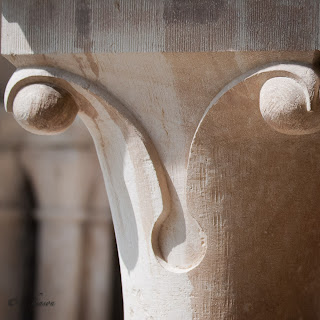When I was studying architecture in the late 70s, modernism
was all the rage. The Bauhaus. Mies. Gropius. And of course, the Swiss-French
architect Charles-Edouard Jenneret, better known as le Corbusier.
While all of my classmates happily constructed boxes with
flat roofs, I struggled to design something (anything!) that I thought was
beautiful. But semester after semester I failed. I had no feeling for modern architecture and at the time there was no other philosophy for me to base my designs on. There was no
“post-modernism, ” no “New Urbanism.” For years, I believed that I simply lacked the requisite
creativity to be an architect.
But later, studying historic preservation, I came to realize
that the problem wasn’t entirely my lack of talent; some of it was due to the
constraints of modern architecture itself. I couldn’t relate to “Less is
more.” I believed, perhaps too literally, that more was more. “Ornament and
Crime?” I thought ornament was beautiful. “The house is a
machine for living in”? Really? What kind of bereft-of-joy lives are lived in
machines, for heaven's sake?
And regarding Corbusier, I completely agreed with the French political
activist Gilles Ivain when he said, “I do not know what this individual – ugly
of countenance and hideous in his conceptions of the world – is repressing to
make him want to crush humanity under ignoble heaps of reinforced concrete...
His power of cretinization is vast. A model by Corbusier is the only image that
brings to my mind immediate suicide.”
You get the idea.
I really didn’t like modern architecture.
So imagine my surprise when I visited the Quartiers Modernes Frugès, a model ‘city’
designed by Le Corbusier in the 1920s, and I didn’t hate it. I even, somewhat
reluctantly, admired it.










